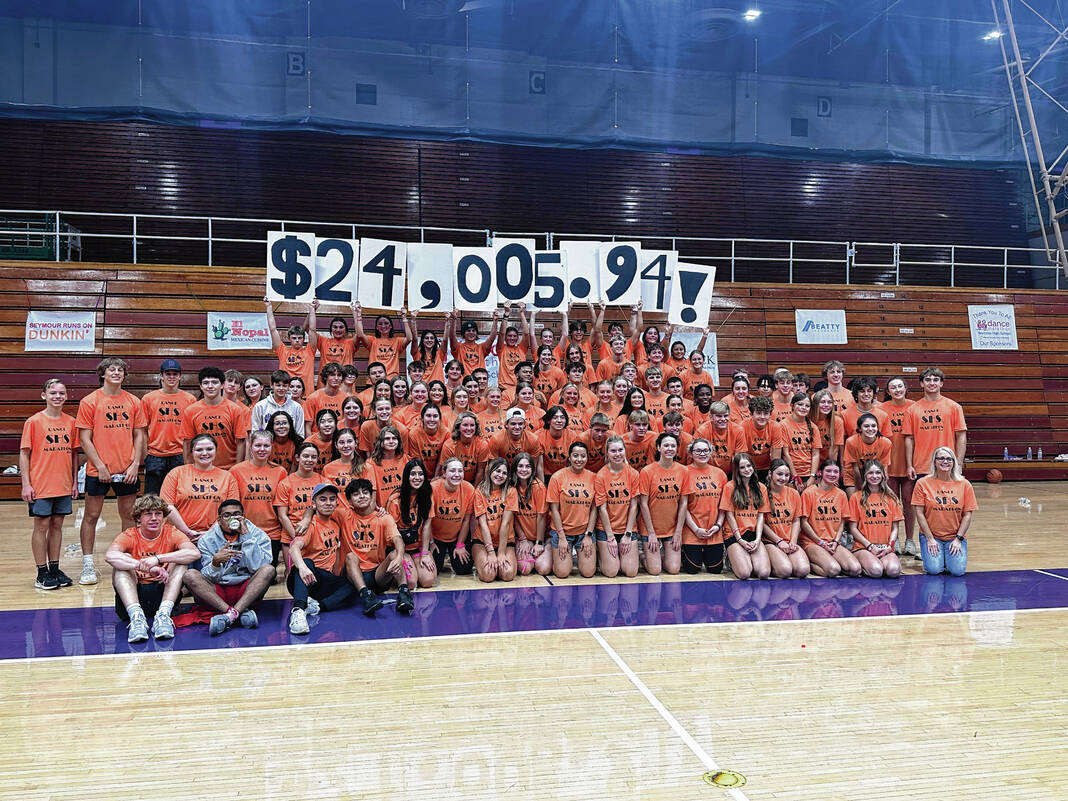
Seymour High School Dance Marathon finished off a year of fundraising Saturday night with a total of $24,005.94 that will go to Riley Hospital for Children for research.
Erika Malone | The Tribune
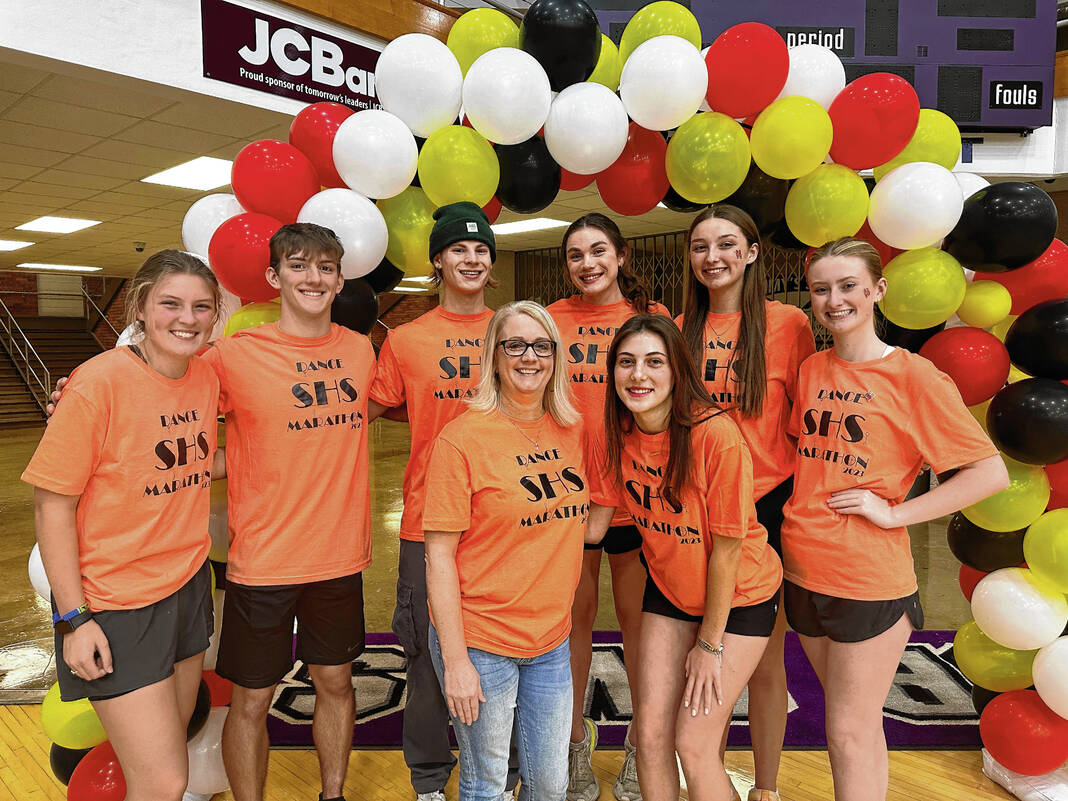
The Seymour High School Dance Marathon committee consists of, from left, Elise Hartung, Bret Perry, Sam Baker, sponsor Kelly Reasoner, Claire Marshall, Ashlyn Henderson, Tori Fee and Aleia Findley.
Erika Malone | The Tribune
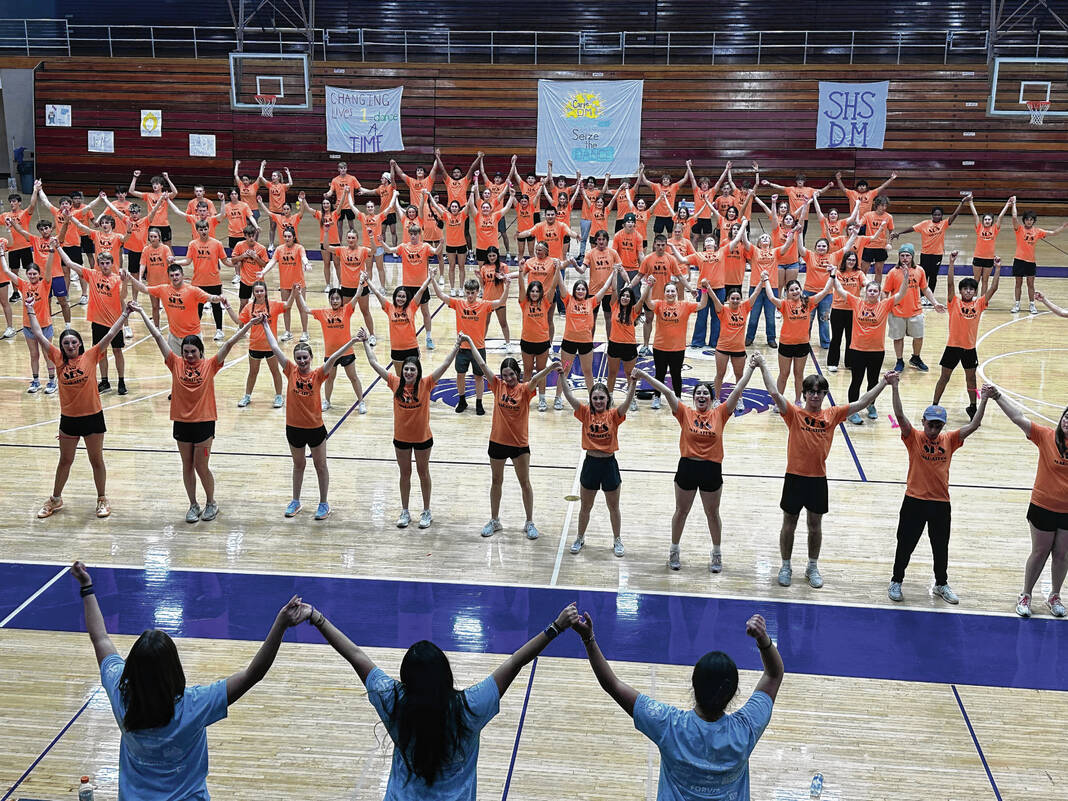
Students complete their dance routine during the Seymour High School Dance Marathon to raise money for Riley Hospital for Children on Saturday night.
Erika Malone | The Tribune
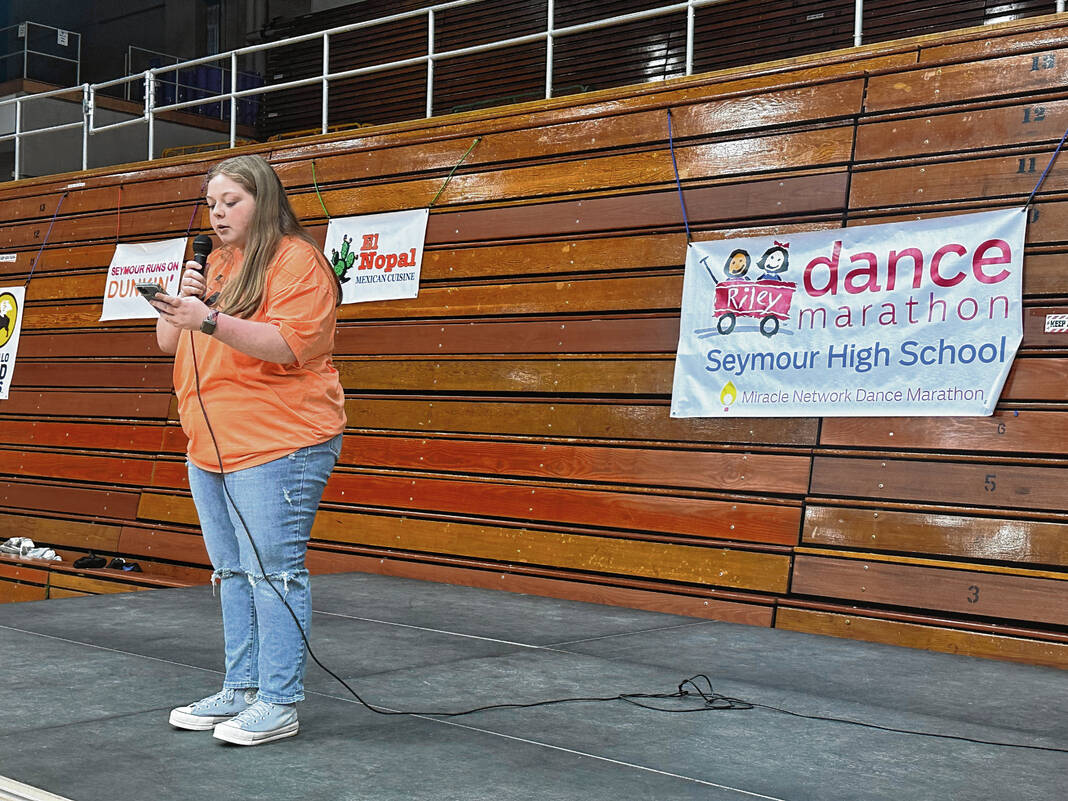
Seymour High School senior Emmah Bridgewater shares a story of how Riley Hospital for Children has impacted her life Saturday night during the Dance Marathon.
Erika Malone | The Tribune
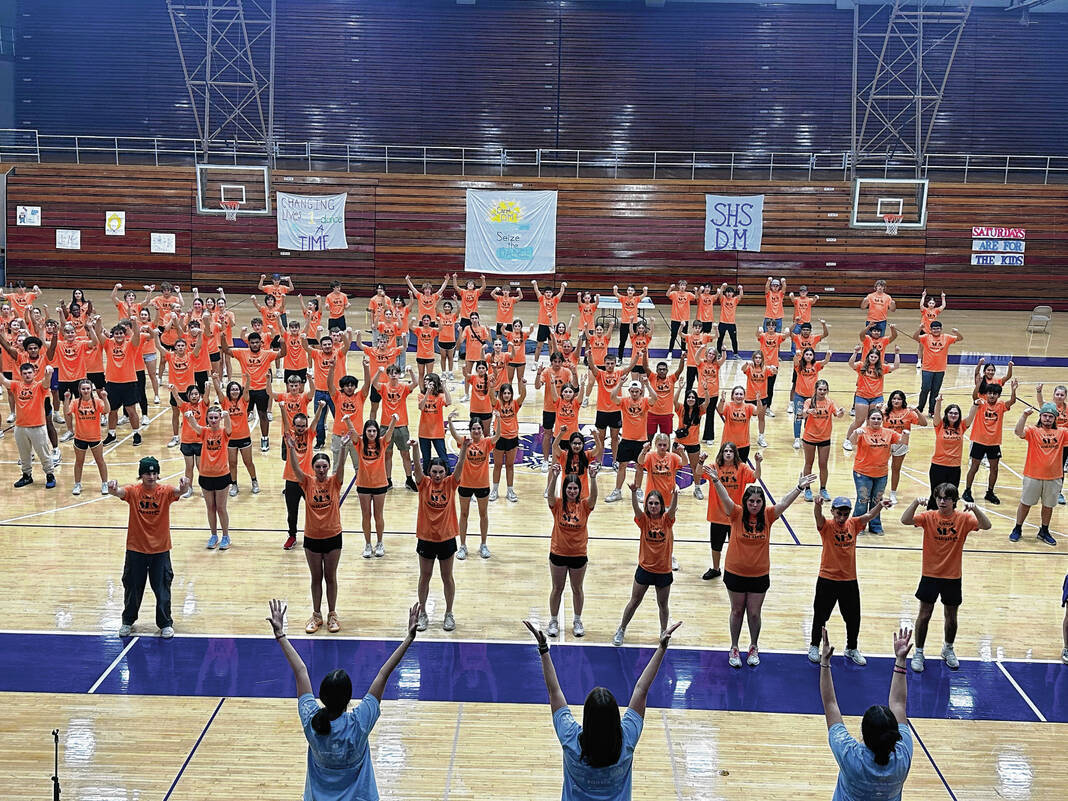
The Indiana University Dance Marathon group leads Seymour High School students in a dance routine Saturday night.
Erika Malone | The Tribune
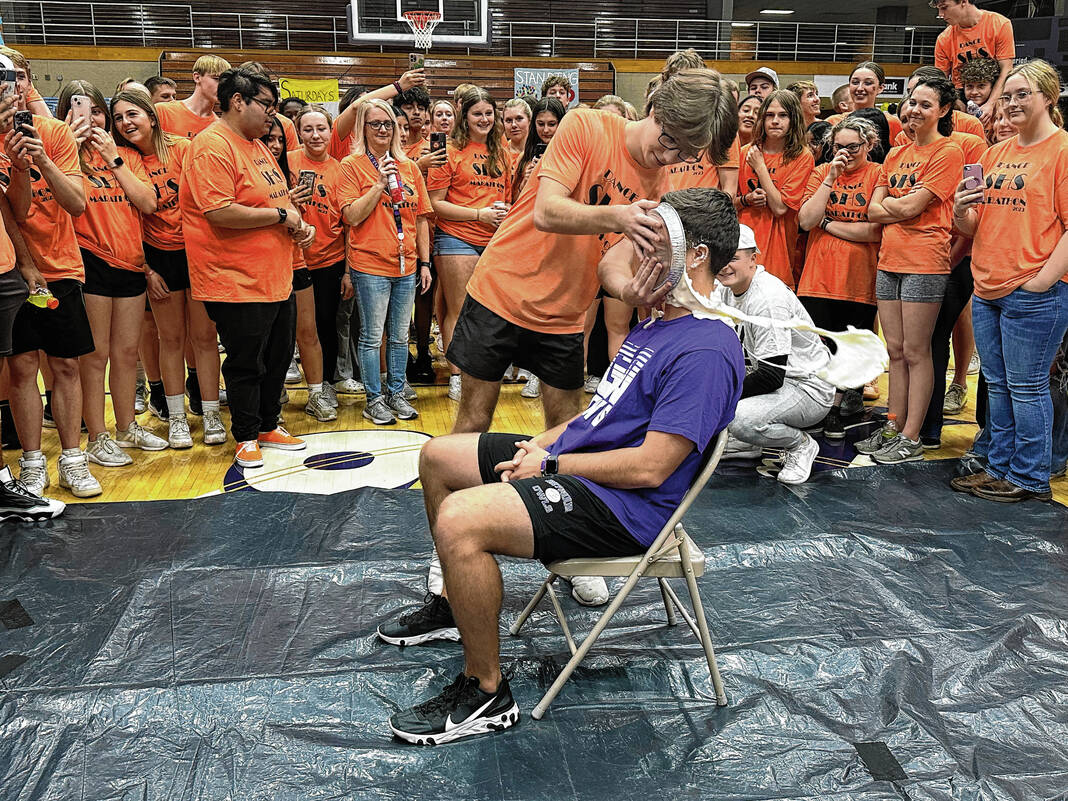
A student pies teacher Alan Perry on Saturday night during the Seymour High School Dance Marathon.
Erika Malone | The Tribune
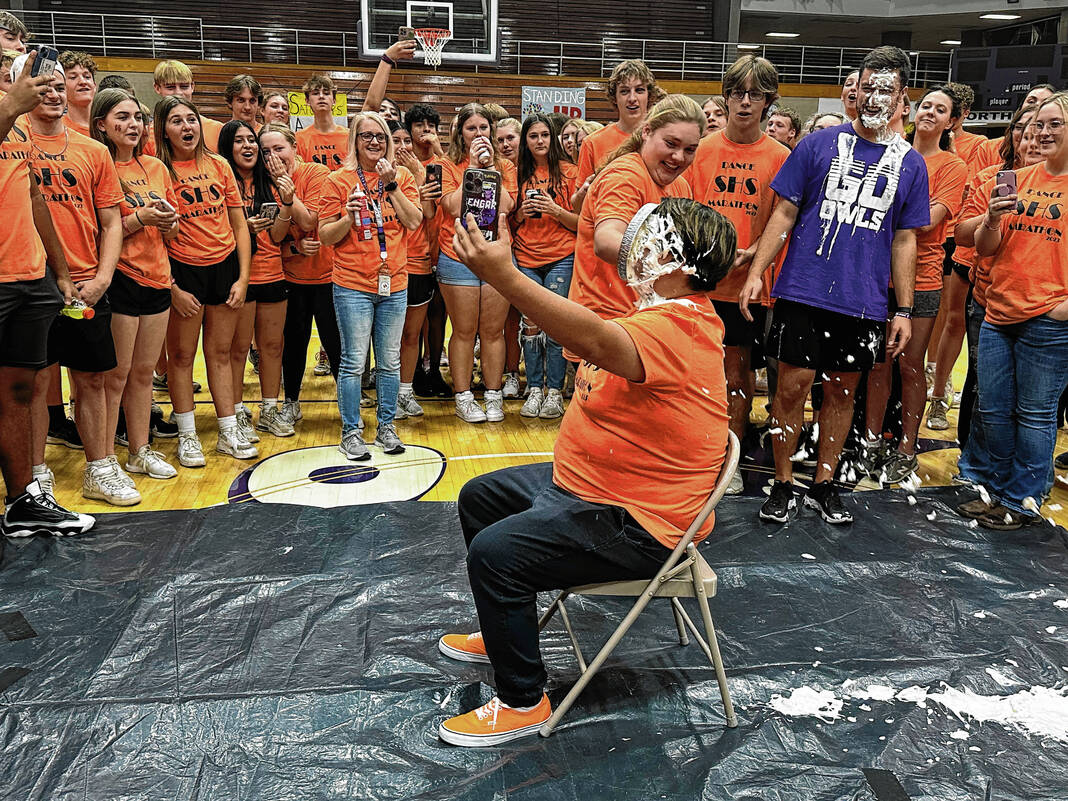
A student pies instructional assistant Ricardo Lara-Enriquez during the Seymour High School Dance Marathon on Saturday night.
Erika Malone | The Tribune
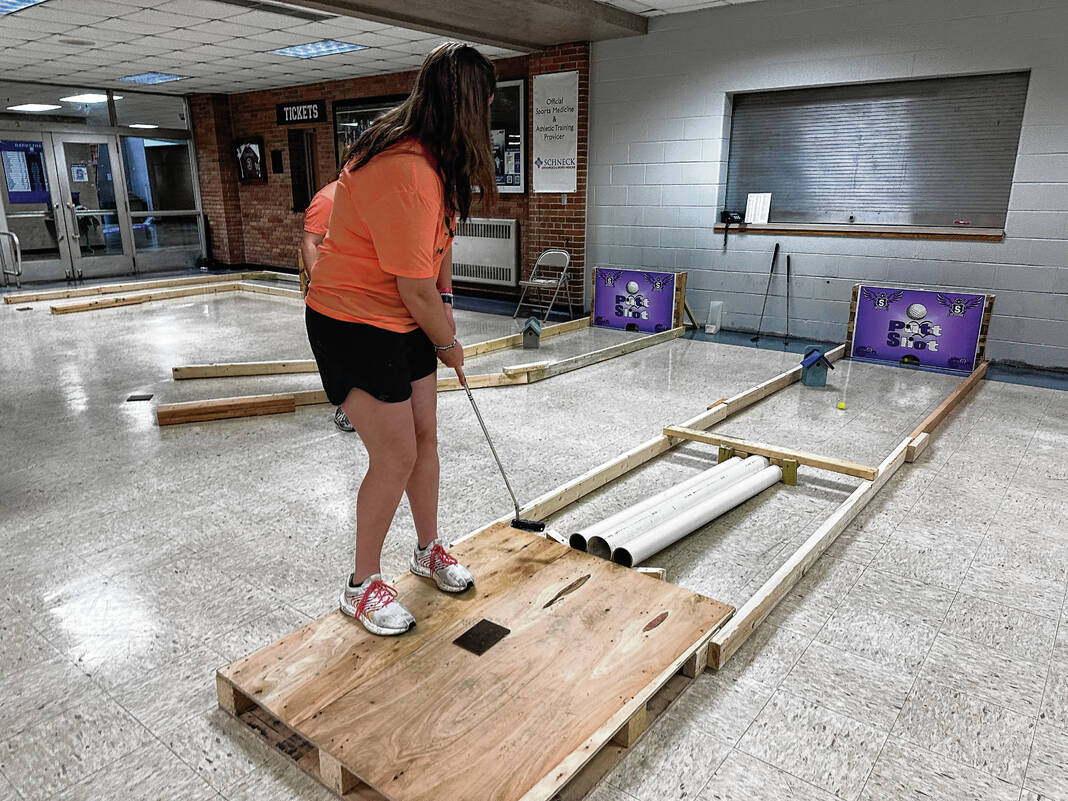
Junior Katie Cottrill make a hole-in-one during the Seymour High School Dance Marathon on Saturday night.
Erika Malone | The Tribune
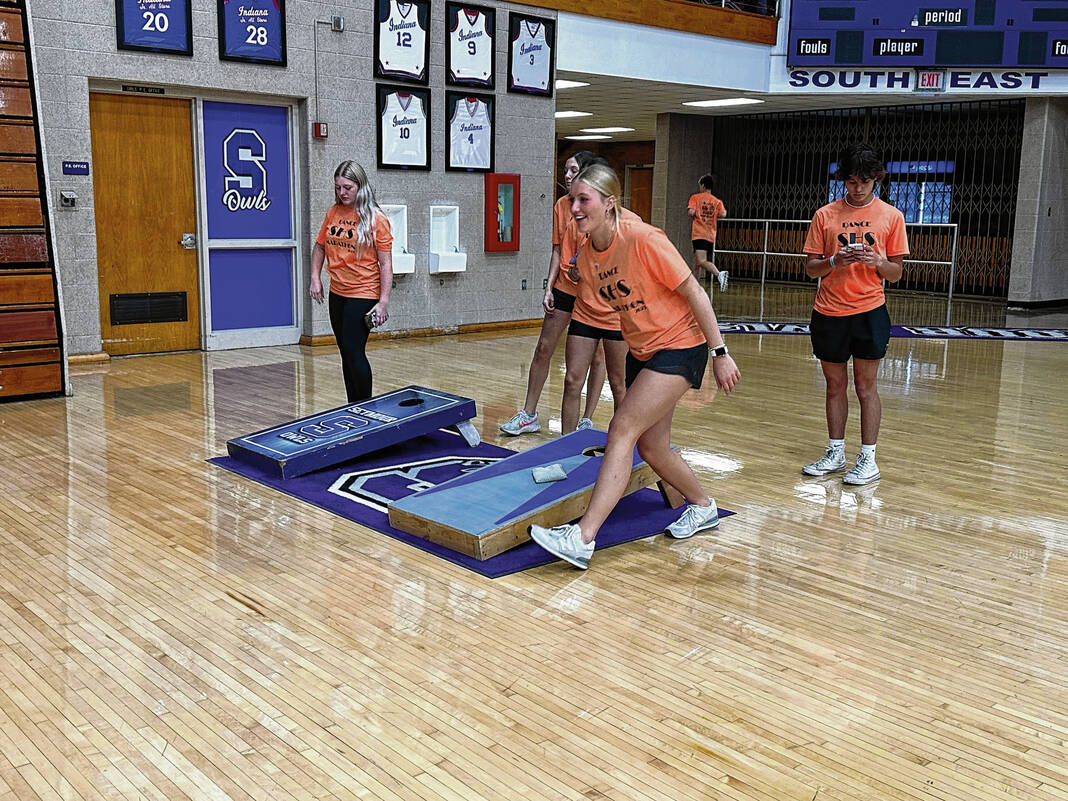
Students stay active playing cornhole during the Seymour High School Dance Marathon on Saturday night.
Erika Malone | The Tribune
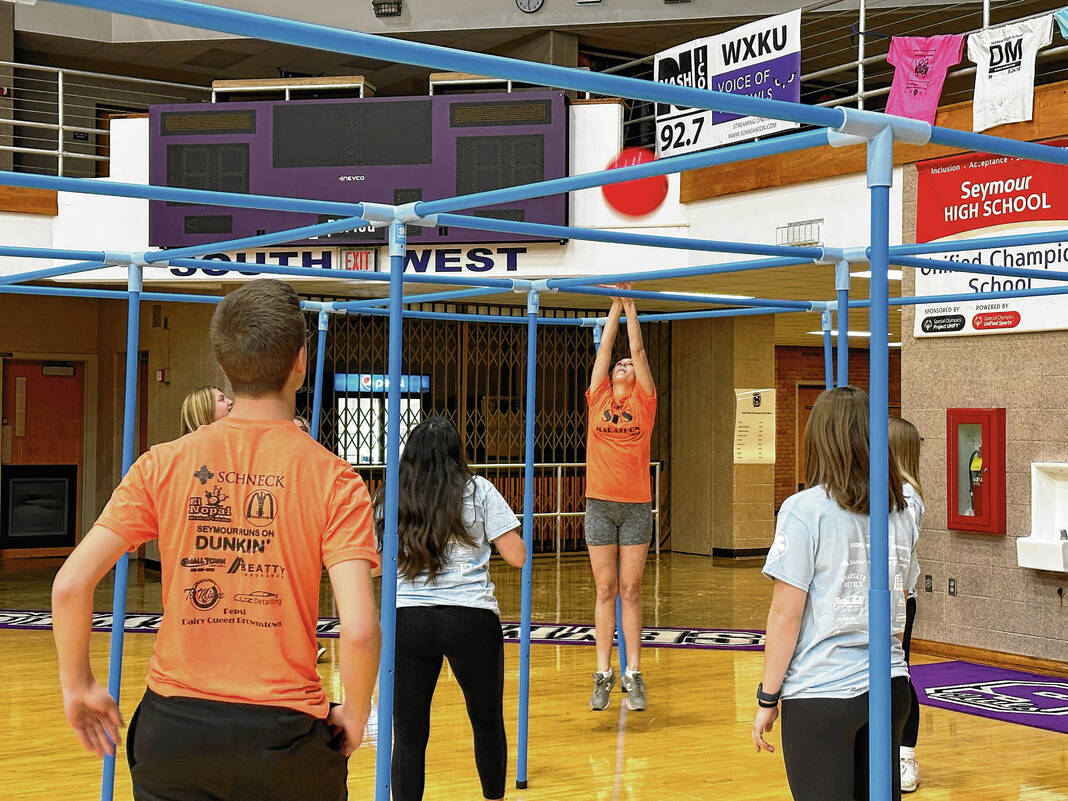
Students get competitive playing nine square at the Seymour High School Dance Marathon on Saturday night.
Erika Malone | The Tribune
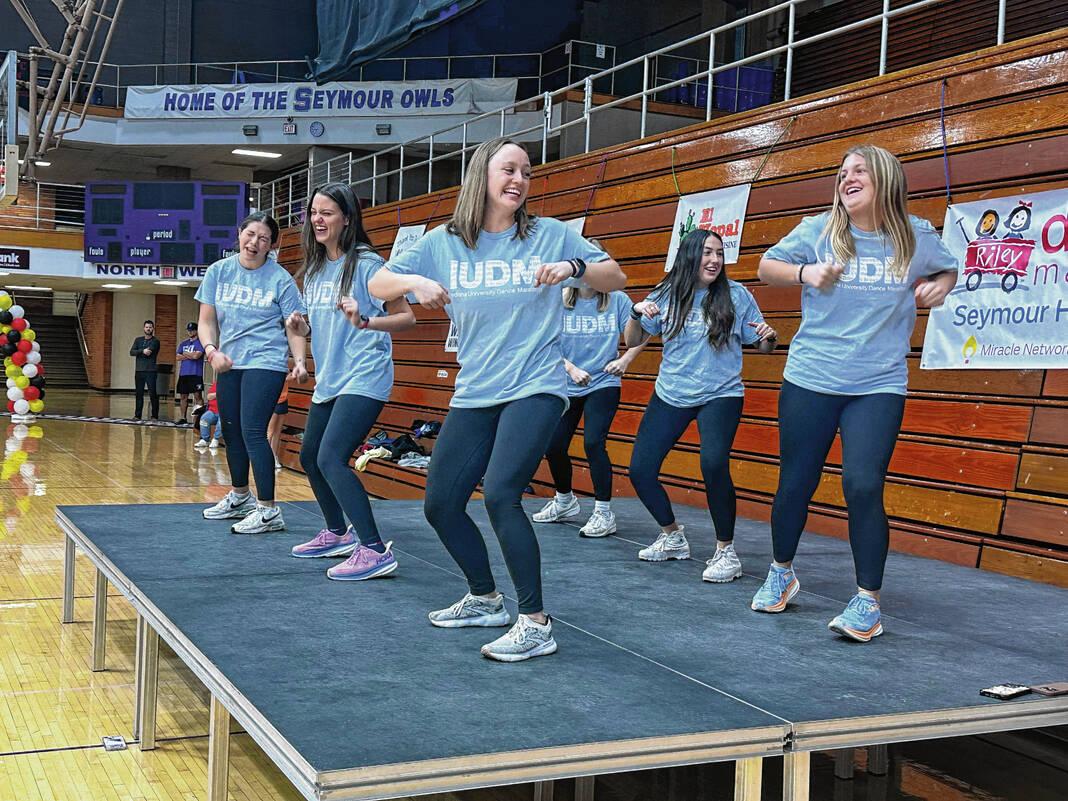
The Indiana University Dance Marathon group teaches Seymour High School students steps to the dance routine during the Dance Marathon on Saturday night.
Erika Malone | The Tribune
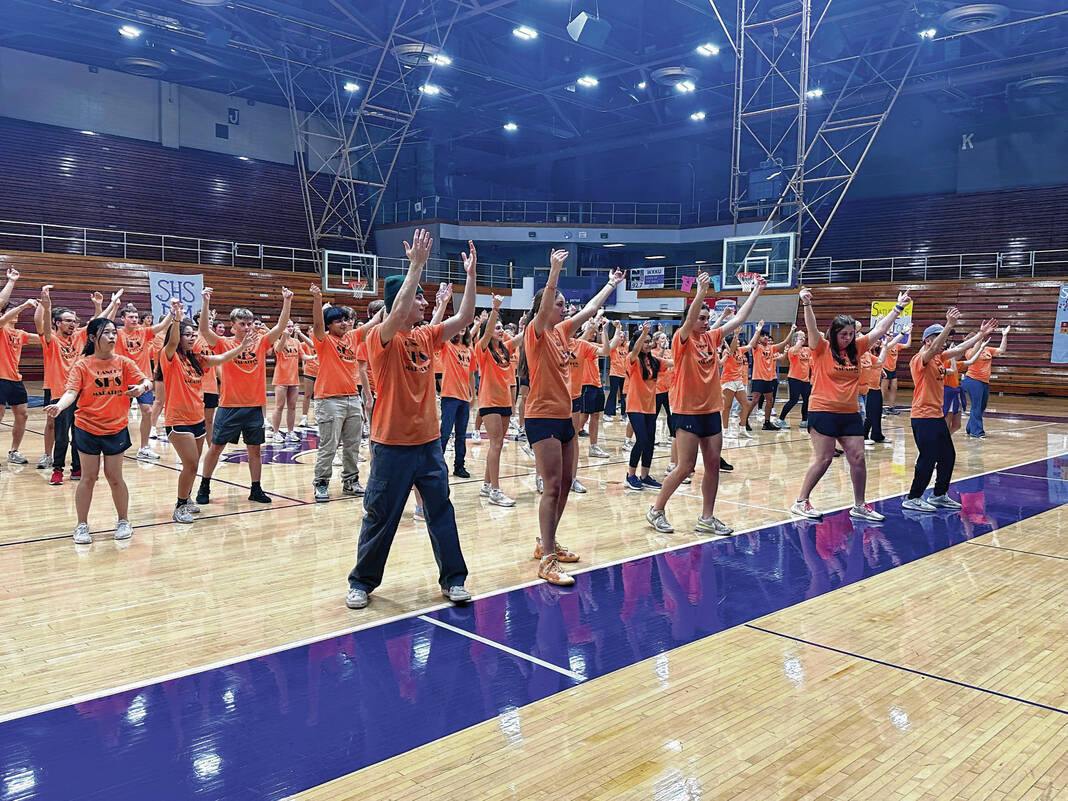
Seymour High School students get their groove on during the Seymour High School Dance Marathon on Saturday night while they raise money for Riley Hospital for Children.
Erika Malone | The Tribune
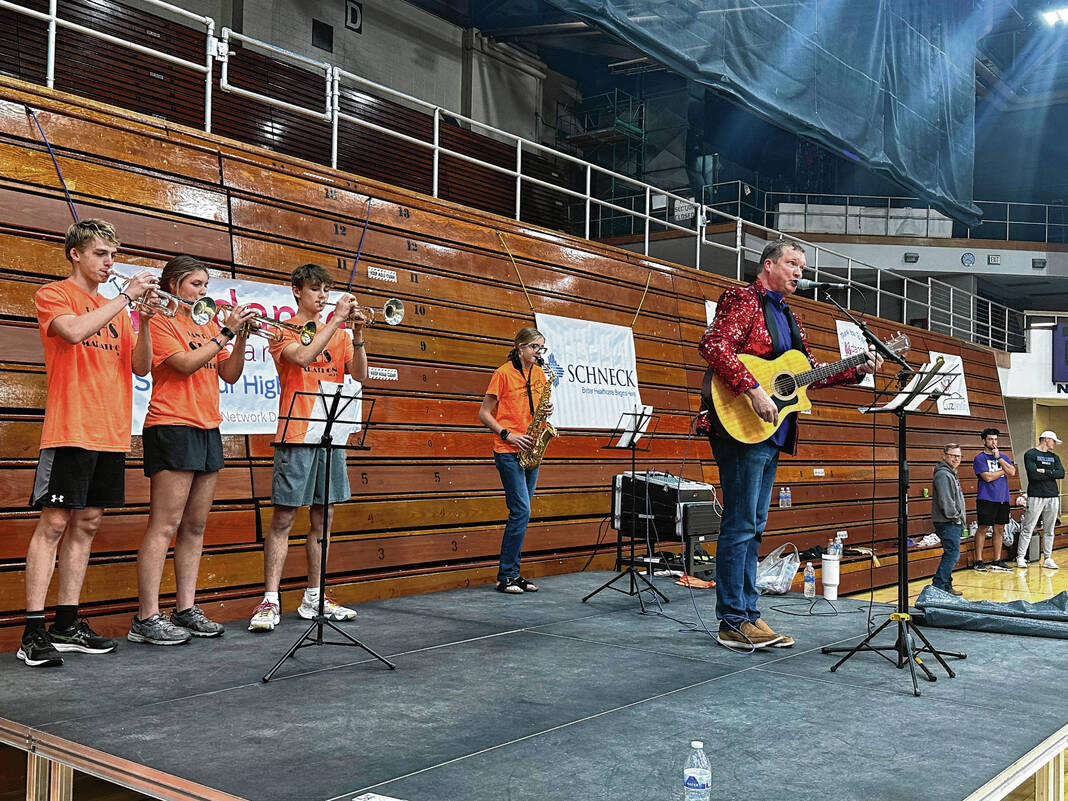
Dr. David Hartung plays a special song he wrote about the Seymour High School Dance Marathon on Saturday night.
Erika Malone | The Tribune
One hundred fifty-two students gathered in the Lloyd E. Scott Gymnasium on Saturday night with two goals in mind.
To raise money for the kids at Riley Hospital for Children at Indiana University Health in Indianapolis and to never sit down.
“We stand for those who can’t,” said Kelly Reasoner, a math teacher at Seymour High School who serves as a sponsor of the Riley Dance Marathon committee.
Known as one of the nation’s leading children’s hospitals, Riley provides care across every pediatric specialty known to medicine, and physicians also deliver complex and acute care beyond its flagship location in downtown Indianapolis, according to rileychildrens.org.
At the end of Saturday night’s five-hour event, committee members held up signs revealing the 2023 fundraising total, $24,005.94, while the rest of the student body chanted “Kids can’t wait.”
Cheering and hugs were exchanged between students and Reasoner.
“It’s been a rough year, but they have all worked so hard and did such a great job,” Reasoner said.
Reasoner also praised local businesses for donating food for Saturday’s event and stepping up as sponsors.
Even though they didn’t break last year’s total of $30,002.55, the school come a long way since $4,209 raised in the inaugural year, 2014.
The goal was to raise at least $18,000, and Reasoner said the students were excited and pleased to have surpassed the goal.
The students learn a dance from a group from Indiana University that teaches and participates in a variety of other activities with the goal of staying on their feet.
Riley Dance Marathons are student-run organizations that support Riley Hospital through year-round fundraising efforts. The fundraising culminates in a multi-hour event where students are awake and on their feet to honor the kids served by the hospital, according to rileykids.org.
“My sister was in Riley as a baby, so I wanted to get involved with the organization and help raise money because it is something close to my heart,” said co-president Elise Hartung.
Multiple fundraisers are held throughout the year leading up to the Dance Marathon, including seniors painting parking spots, Dance Marathon famous cookies, passing donation buckets at sporting events, pie a teacher and Dance Marathon retro T-shirt sales, to name a few.
“It’s been chaotic at times, but we have all worked really hard together this year to support this great cause,” said senior Tori Fee, who is part of the marketing committee.
The Seymour High School Dance Marathon committee is separated into subcommittees and made up of students from the student body.
“Through this committee and the fundraising, I saw how you can personally make a difference in someone’s life, and that’s what drew me in,” said senior Claire Marshall, who is part of the fundraising committee.
The first Dance Marathon was in 1991 at Indiana University to honor AIDS patient Ryan White. Today, the program in Indiana is Riley’s fastest-growing fundraising event program with more than 60 high school and collegiate programs.
“We all come together to raise money for this cause that means a lot to many people, and we are having fun while we do it,” said senior Aleia Findley, who is part of the social media committee.
Dance Marathon is a nonprofit organization that raises funds and awareness for more than 170 pediatric hospitals across North America and the only children’s charity committed to have 100% of the funds raised stay local to support local children.
By “dancing for those who can’t” for hours on end, college and high school students across Indiana raise millions of dollars each year for the children at Riley, according to rileykids.org.
“I like to see that we are making a difference and bringing smiles to everyone’s faces,” said junior Alma Leal, part of the marketing committee.
Senior Emmah Bridgewater shared her story on how Riley Hospital impacted her life.
“My sister and I have been going to Riley children’s hospital since we were 6 years old, so Riley has always been a part of my family,” she said. “I had and still have really bad migraines, and my sister suffered and still suffers from epilepsy.”
Bridgewater had the same neurologist from 6 to 15, but when she was a sophomore in high school, she was told her doctor was retiring and she needed to find another doctor at Riley.
When she finally found another doctor, she was told she needed to get an MRI, which she had never had before. A few weeks later, her mom got the call that her MRI came back abnormal, and the next step was a spinal tap.
“The spinal tap revealed the pressure inside my head was 37,” she said. “Forty is the stroke level, and the normal amount of pressure you should have inside of your head is 20.”
Bridgewater was told her spinal fluid does not drain properly due to a condition called ventricle stenosis. She was then diagnosed with idiopathic intracranial hypertension.
She was in and out of the hospital for most of the first semester of her sophomore year, and finally, after months of waiting, she was to have brain surgery to get a shunt. She met her brain surgeon and was scheduled to have surgery Dec. 16, 2021.
“That day, I went to Riley and got ready for surgery. Before I was rolled back, a lady came up to me and said she was my child life specialist,” she said. “She held my hand the whole way back to the operating room and while I was put to sleep. I woke up from surgery and immediately felt better.”
Bridgewater said even though she was terrified, the surgery changed her life.
Since her sophomore year, Bridgewater has had four spinal taps and two surgeries and will have to live with this condition for the rest of her life.
“Unfortunately, now that I am 18, I have to leave Riley children’s hospital and go to adult doctors, but I will always remember and miss my doctors at Riley because they changed my life,” she said. “I would like to say thank you to Riley for giving me an amazing team of doctors, to the nurses that would hold my hand when I was getting testing done and comforting me when all I wanted was to sleep in my own bed and thank you to my doctors for believing me and taking actions to help make me feel better.”
